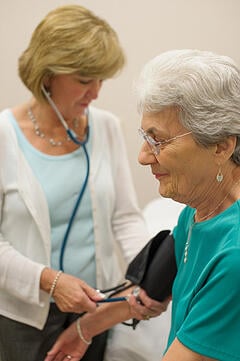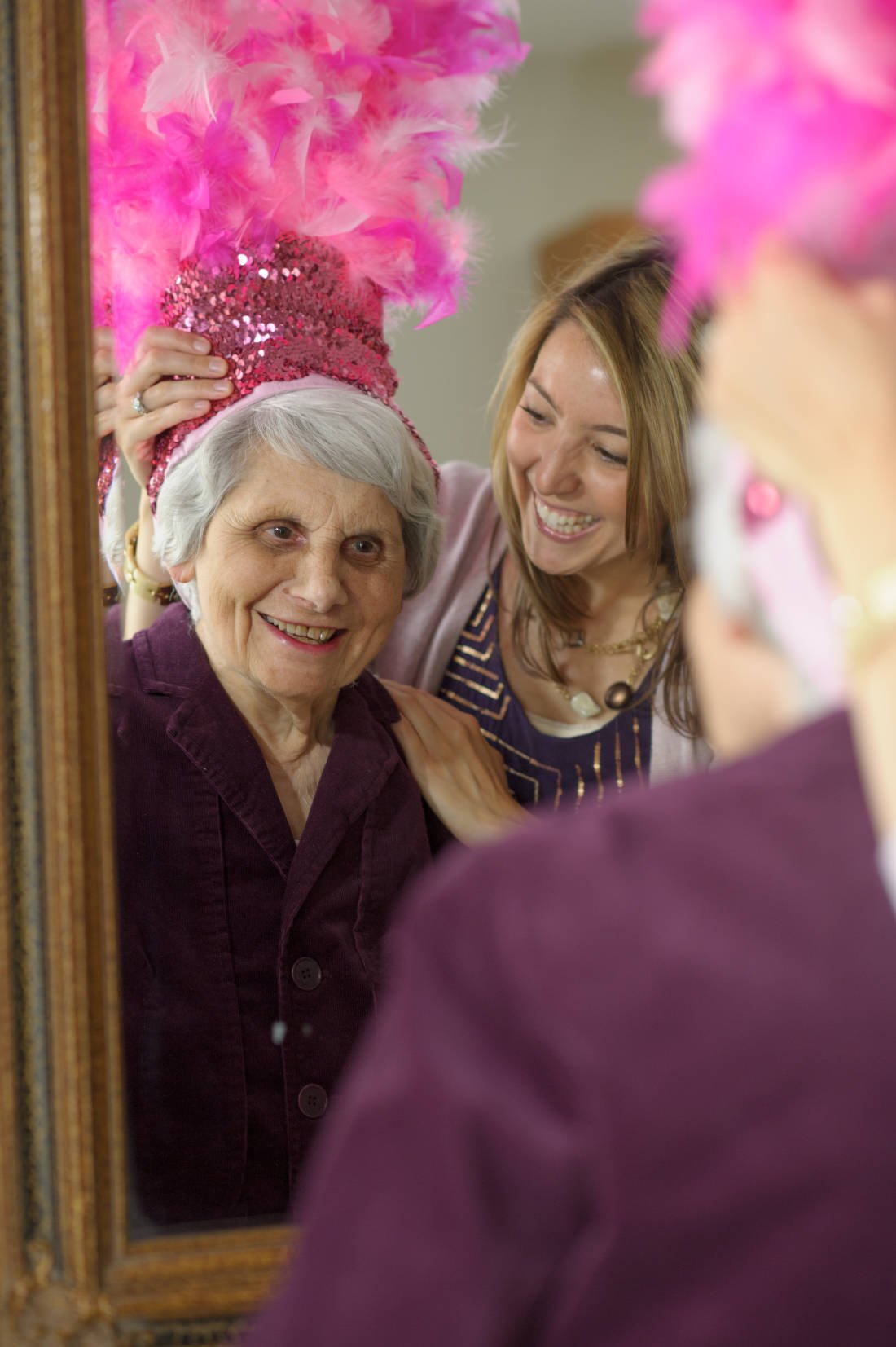Seniors and High Blood Pressure: Understanding the Numbers
assisted living | Aging & Caregiving
 More than half of all seniors in the United States suffer from high blood pressure, according to the Centers for Disease Control and Prevention (CDC).
More than half of all seniors in the United States suffer from high blood pressure, according to the Centers for Disease Control and Prevention (CDC).
Also called hypertension, high blood pressure has been nicknamed the “silent killer” because of its lack of symptoms. Because the condition is often under diagnosed and undertreated, it’s particularly important to understand high blood pressure and its risk factors.
Continue reading to learn more about high blood pressure and your aging loved one.
What is Hypertension?
As blood flows through your arteries to the rest of your body, blood pressure is its force against artery walls. There are two types of blood pressure:
- Systolic blood pressure occurs when your heart is beating and pushing out blood. If your systolic blood pressure is between 120 and 139, you have borderline high blood pressure or prehypertension. If your systolic blood pressure is over 140, you have hypertension.
- Diastolic blood pressure occurs when your resting heart fills with blood. If your diastolic blood pressure is between 80 and 89, you have borderline high blood pressure or prehypertension. A diastolic blood pressure of 90 or greater indicates hypertension.
Measured in millimeters of mercury (mm Hg), blood pressure numbers are always given as systolic/diastolic; the safest, or “normal,” range is 120/80. As blood pressure is a measure of comprehensive circulatory health, higher numbers indicate that the heart is working too hard.
Determining High Blood Pressure
Routine blood check-ups are critical to the health of your aging loved one. Blood pressure is measured with an easy and pain-free test in which the doctor places a cuff with a small pressure gauge -- referred to as a sphygmomanometer -- around the upper arm, forearm or wrist. As the cuff is inflated and deflated, the doctor uses a stethoscope to listen to blood circulating through the arteries. Additionally, patients may be asked to check blood pressure at home as numbers can vary according to diverse factors, such as time of day, stress levels and others.
Seniors and Hypertension
31 percent of Americans -- or 67 million -- have high blood pressure, according to the CDC. And while anyone can develop high blood pressure, seniors are at increased risk because the aging heart changes over time. In fact, according to the National Heart, Lung and Blood Institute, even those who have normal blood pressure at 55 have a 90 percent chance of developing the condition as they age.
Specifically, the majority of seniors with high blood pressure have isolated systolic hypertension, in which the systolic number is high while the diastolic number is normal. This indicates that arteries near to the heart have stiffened and become less responsive to blood flow.
If left untreated, both high blood pressure and isolated systolic hypertension can lead to serious health problems, including heart failure, stroke, arterial damage, chronic kidney disease and blindness.
Controlling High Blood Pressure
While even seniors with heart healthy habits can have hypertension, lifestyle changes have been shown to lower risk and help keep blood pressure in check. These include:
- Maintaining a healthy weight
- Daily exercise
- A healthy diet
- Moderate salt intake
- Moderate alcohol consumption
- No smoking
- A good night’s sleep
Sometimes lifestyle changes aren’t enough. In this case, a healthcare provider may prescribe medicine to help lower numbers to the optimal range. Be sure to inform your health care provider about any other medications you may be taking.
While high blood pressure is a life-threatening condition, it remains woefully undertreated for most seniors. Take steps now to understand blood pressure, decrease chronic illness and improve the quality of life of your aging loved one.
Key Takeaways:
- High blood pressure is a serious condition, even if it doesn’t cause noticeable symptoms.
- Routine blood pressure check-ups can help diagnose, monitor and treat high blood pressure.
- Lifestyle changes and medication are two ways to reduce blood pressure.
About Marissa Salvesen
My journey into the world of senior living began when I started working for United Methodist Homes in 2010. Starting as an Activities Director at one of our award-winning assisted and independent living communities and then transitioning to Marketing and Promotions Manager for UMH, I now work as the Manager of Mission Development, fostering the Mission and Values of our organization. I love sharing stories about the many ways we build meaningful relationships and enrich the lives of those we serve, and am proud to be part of building UMH’s 140-year legacy of caring. Wondering what makes our communities such special places to live and work? Connect with me and find out!

Our Blog is a 2016 Platinum Generations Award Winner! The Generations Award is an annual international competition for excellence in senior marketing recognizing professionals who have communicated to the 50+ Mature Markets.




